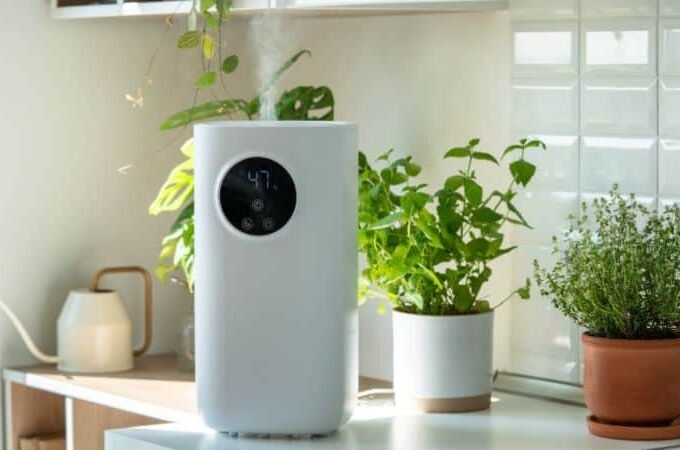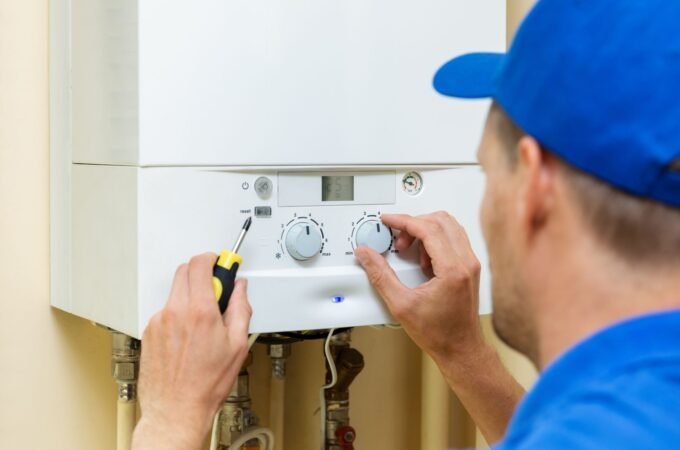
Ultimate Checklist for 40-inch Gas Ranges
Table of Contents
ToggleKey Features to Evaluate in a 40-inch Gas Range
Choosing a new kitchen range can be a big decision. We often face a common dilemma: how to get enough cooking power without overwhelming our space.
This is where the 40-inch gas range shines. It offers a unique solution. This size provides significantly more cooking surface and oven capacity than standard 30-inch models. Yet, it remains more compact than large 48-inch professional ranges. It’s truly a perfect fit for many homes.
In this comprehensive guide, we will delve into everything about 40-inch gas ranges. We will cover their unique benefits and the specific features you should look for. We’ll also discuss how they fit into various kitchen designs, along with installation and maintenance tips. Our goal is to help you make an informed choice. We want you to find the ideal range to lift your culinary experience.
When considering a 40-inch gas range, we’re looking for an appliance that combines power, precision, and versatility. An ILVE 40-inch gas range, for example, offers an ideal balance, allowing for more burners and greater oven capacity without requiring the expansive kitchen space typically needed for larger commercial-style units. Our evaluation should focus on the core components: the cooktop’s capabilities, the oven’s performance, and the overall build quality that ensures longevity and reliable cooking.
Cooktop Configuration and Power
The heart of any gas range is its cooktop, and a 40-inch model provides ample room for a robust setup. We typically find these ranges equipped with 5 or 6 sealed burners, offering a range of BTU (British Thermal Unit) outputs for diverse cooking needs. For instance, some premium 40-inch models, such as the ILVE 40-Inch Majestic II Dual Fuel Range, feature 6 burners with outputs ranging from a gentle 3,200 BTU for simmering delicate sauces to a powerful 20,000 BTU for rapid boiling or searing. Other models, such as the ILVE 40-Inch Nostalgie II Dual Fuel Natural Gas Freestanding Range, push this further with a highest burner output of 25,000 BTU, allowing for incredibly fast heat-up times.

We value cooktops that offer:
- High-Power Burners: Essential for quickly bringing large pots of water to a boil, stir-frying, or achieving a perfect sear on meats. Look for at least one or two burners in the 18,000-25,000 BTU range.
- Simmer Capabilities: Equally important are burners that can maintain a very low, consistent flame. A true simmer burner, typically operating at around 3,000-5,000 BTU, prevents burning and allows for slow cooking, melting chocolate, or keeping food warm without scorching.
- Continuous Cast-Iron Grates: These heavy-duty grates cover the entire cooktop surface, allowing us to slide heavy pots and pans from one burner to another without lifting. This improves safety and convenience.
- Sealed Burners: These are easier to clean as spills are contained on the cooktop surface and don’t seep into the burner assembly.
Beyond the standard burners, the larger footprint of a 40-inch range often accommodates valuable add-ons:
- Griddle: A built-in griddle, often removable, is fantastic for pancakes, bacon, grilled sandwiches, or even searing vegetables. The ILVE 40-Inch Nostalgie II Dual Fuel Natural Gas Freestanding Range, for example, includes a griddle as part of its 6-burner configuration.
- Wok Ring: For those who enjoy Asian cuisine, a dedicated wok ring attachment can provide stability and optimal heat distribution for cooking with a wok.
- Bridge Element: Some models feature a bridge element that connects two burners, creating an elongated heating surface ideal for oversized cookware, such as griddle pans or fish kettles.
For deeper insights into maximizing your cooktop’s potential, we often refer to resources like “Mastering ILVE Gas Cooktops: 9 Essential Tips,” which provides practical advice for leveraging different burner types and cooking techniques.
Oven Capacity and Technology
The oven section of a 40-inch gas range is where its increased width truly shines. While a 30-inch range typically offers a single oven, a 40-inch model might provide a single, larger oven or, more commonly, a dual-oven configuration.
- Single, Large Oven: If you frequently bake large items, such as turkeys or multiple sheet pans of cookies, a single oven with a generous cubic footage (e.g., the ILVE 40-Inch Majestic II Dual Fuel Range boasts a 3.82 cu. ft. oven capacity) can be ideal. This allows for excellent air circulation around larger dishes.
- Dual Ovens: Many 40-inch ranges, such as the ILVE 40-Inch Nostalgie II Dual Fuel Natural Gas Freestanding Range, feature dual ovens. This model offers a primary oven capacity of 2.3 cu. ft. and a secondary oven capacity of 2 cu. ft., totaling 4.3 cu. ft. This setup is incredibly versatile, allowing us to cook multiple dishes at different temperatures simultaneously, perfect for holiday meals or entertaining. We can bake a pie in one oven while roasting vegetables in the other, without flavor transfer.
Beyond sheer size, modern oven technology significantly improves cooking performance:
- European Convection (True Convection): This system incorporates a third heating element around the convection fan, ensuring even heat distribution throughout the oven cavity. This results in faster cooking times, more consistent browning, and the ability to bake on multiple racks simultaneously without needing to rotate dishes.
- Multi-Rack Baking: With a larger or dual oven, we gain the ability to bake multiple batches of cookies or casseroles at once, a huge time-saver for busy households.
- Rotisserie Function: Some high-end models include a rotisserie kit, allowing us to cook succulent, evenly browned meats, such as chickens or roasts, right in our oven.
- Quick Pre-Heat: Advanced heating elements and fan systems can significantly reduce the time it takes for the oven to reach the desired temperature, making spontaneous cooking more feasible.
- Soft-Close Doors: A small but appreciated luxury, soft-close oven doors prevent slamming and add to the overall premium feel of the appliance.
For those interested in the engineering behind superior baking and roasting, learning about “The Technological Heart of ILVE Ovens” can provide valuable insights into how these appliances achieve such precise and consistent results.
Fuel Type Considerations: Gas vs. Dual-Fuel
When we refer to a “40-inch gas range,” we primarily mean that the cooktop is powered by gas. However, the oven component can vary, leading to two main fuel types:
- All-Gas Range: Both the cooktop and the oven run on natural gas or liquid propane (LP). Gas ovens are known for providing moist heat, which can be beneficial for roasting meats and baking certain types of bread. They offer quick preheating and responsive temperature changes.
- Dual-Fuel Range: This increasingly popular configuration combines a gas cooktop with an electric oven. The gas cooktop offers instant heat and precise flame control, which chefs love. At the same time, the electric oven offers dry, even heat, which is often preferred for baking delicate pastries, cakes, and achieving consistent browning. The electric oven’s heating elements (top, bottom, and often convection) typically provide a more stable and uniform temperature throughout the cavity, making it ideal for precision baking. Many 40-inch ranges, including several models from ILVE, are available as dual-fuel options. This hybrid approach often provides the best of both worlds for serious home cooks.
While this guide focuses on gas ranges, it’s worth noting that 40-inch induction ranges are also available, offering an alternative for those who prioritize energy efficiency and precise low-temperature cooking, although they require specific cookware. For those seeking a blend of classic control and modern precision, a high-quality 40-inch gas range, or its dual-fuel counterpart, stands out as an excellent choice.
Design, Layout, and Aesthetics
Beyond performance, the visual impact of a range in our kitchen is undeniable. A 40-inch gas range, with its substantial presence, often becomes the focal point of a kitchen. Its design, how it integrates into the layout, and the available customization options play a crucial role in defining the overall aesthetic of our culinary space.
How to Integrate a 40-inch Gas Range into Your Kitchen Layout
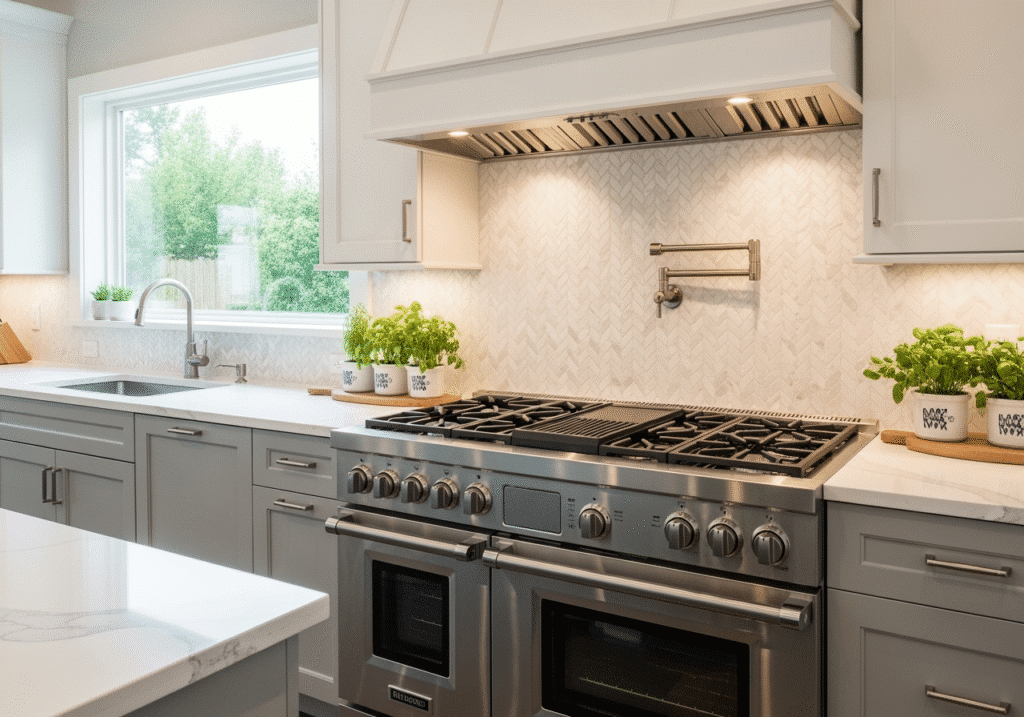
Integrating a 40-inch gas range requires careful planning to ensure both functionality and aesthetic harmony. Unlike standard 30-inch models, the extra width of a 40-inch unit necessitates specific adjustments to cabinetry and countertops.
- Cabinetry Requirements: Existing standard cabinetry often comes in 30-inch or 36-inch widths. For a 40-inch range, we will likely need custom cabinetry or modifications to accommodate the wider appliance. This might involve reducing the size of adjacent cabinets or building a custom range opening. We’ve seen situations where homeowners are replacing an older, non-standard-sized 40-inch stove and face challenges with the resulting gaps if they choose a smaller replacement. Planning for the exact dimensions of the new 40-inch range is crucial to avoid unsightly spaces or costly rework.
- Countertop Depth: Most freestanding ranges are designed to fit flush with standard 24-inch deep countertops. However, it’s always wise to confirm the specific depth of the 40-inch model, as some professional-style ranges might have slightly different dimensions that could affect the countertop overhang or backsplash.
- Island vs. Wall Placement: A 40-inch range makes a stunning statement whether placed against a wall or as the centerpiece of a kitchen island. On an island, it becomes a social cooking hub, but requires careful planning for gas line, electrical, and ventilation routing. Against a wall, it often anchors a cooking zone, providing a traditional yet impactful presence.
- Clearance Space: Always adhere to manufacturer guidelines for minimum clearances to adjacent combustible surfaces (cabinets, walls). This is crucial for safety and proper appliance operation.
- Ventilation Planning: Due to their powerful burners and larger cooking surface, 40-inch gas ranges require robust ventilation. We must plan for a range hood that is appropriately sized, at least as wide as the range itself, and ideally extends slightly beyond, to effectively capture smoke, steam, and odors. This also involves planning for the necessary ductwork to vent air outdoors.
Modern Design Trends and Customization
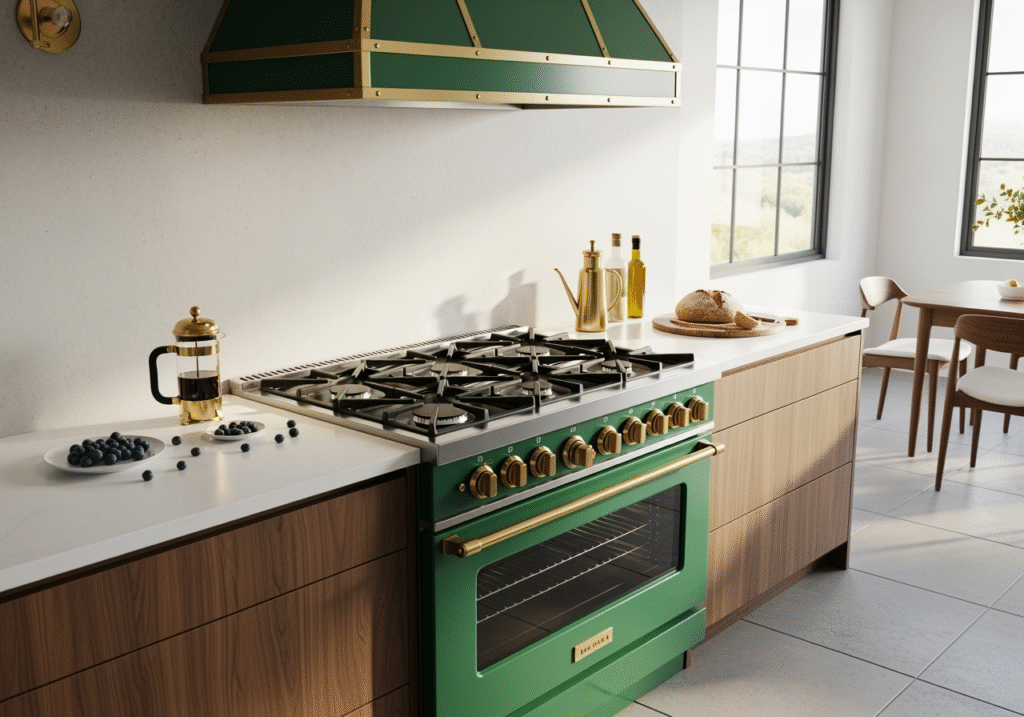
The aesthetic appeal of 40-inch gas ranges has evolved significantly, moving beyond simple stainless steel to offer a vast array of customization options that allow us to tailor the appliance to our unique kitchen style.
- Stainless Steel Finishes: While classic stainless steel remains a popular choice for its timeless appeal and professional look, we now see variations like fingerprint-resistant stainless steel or darker “black stainless” options that offer a contemporary edge.
- Custom RAL Colors: For those seeking a truly bespoke kitchen, some manufacturers, like ILVE, offer their ranges in a wide spectrum of custom RAL colors. This allows us to match the range to specific cabinetry, wall colors, or create a bold, contrasting statement piece. The ILVE 40-Inch Majestic II Dual Fuel Range, for example, is available in White, while the ILVE 40-Inch Nostalgie II Dual Fuel Natural Gas Freestanding Range comes in Glossy Black. Other options include Blue Grey with Brass trim, offering a rich palette for personalization.
- Metallic Trims: The hardware on a range—knobs, handles, and trim—can dramatically alter its appearance. We can choose from various metallic finishes, including brass, bronze, chrome, and copper. These details allow for subtle or striking accents that tie into other kitchen fixtures. The ILVE 40-Inch Majestic II Dual Fuel Range, for instance, is available with Brass trim, adding a touch of classic elegance.
- Knob and Handle Styles: Beyond color and material, the style of the knobs and handles themselves contributes to the range’s overall design. From sleek, minimalist bar handles to more ornate, traditional designs, these elements allow us to fine-tune the aesthetic.
When considering professional-style ranges, the level of customization available can be truly impressive, allowing us to build a range that is not just an appliance but a piece of art. We encourage exploring the “Colors” and “Build Your Own” options offered by manufacturers to fully appreciate the possibilities for creating a truly unique kitchen centerpiece.
Installation, Maintenance, and Cost Considerations
Investing in a 40-inch gas range is a significant decision, and understanding the practicalities of its installation, ongoing maintenance, and overall cost is essential. These factors ensure that our investment is not only aesthetically pleasing and functional but also safe and sustainable in the long term.
Installation Requirements and Challenges
Proper installation is paramount for the safe and optimal operation of any gas range, especially a larger 40-inch model. We strongly recommend professional installation by a licensed technician.
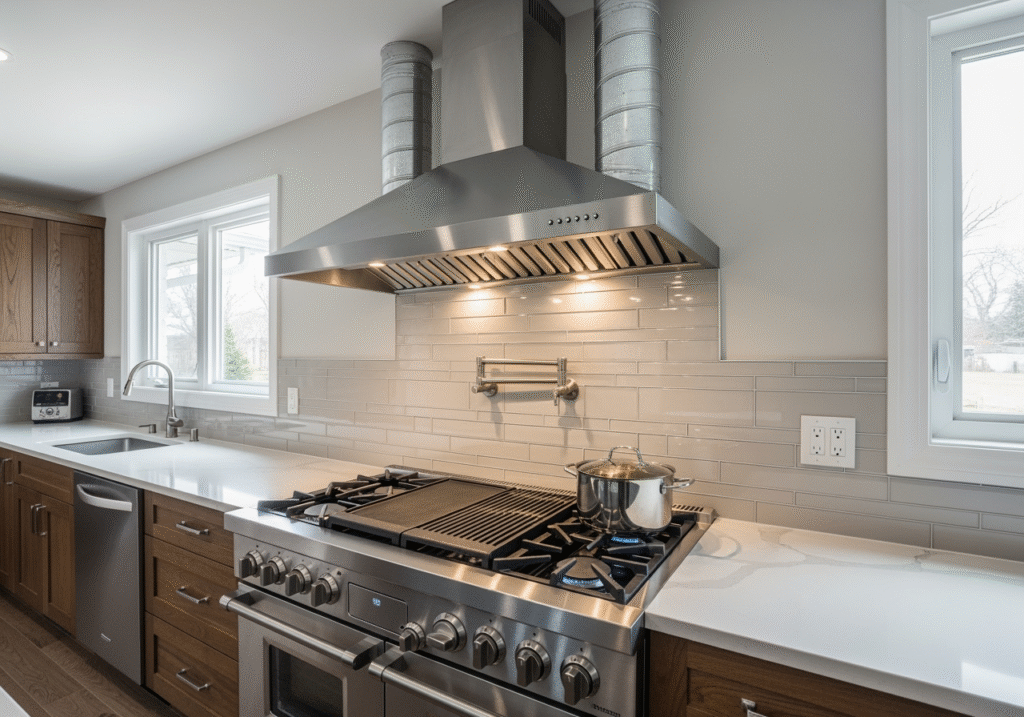
Key requirements and potential challenges include:
- Gas Line Connection: A dedicated gas line (natural gas or LP) with the correct pressure and shut-off valve must be available at the installation point. This is a critical safety component.
- Electrical Requirements: While the cooktop operates on gas, most modern gas ranges, especially dual-fuel models or those with electronic ignition, convection fans, and digital controls, require an electrical connection. For dual-fuel ranges, this is typically a 240V, 30-amp dedicated circuit, similar to an electric oven. All-gas ranges usually require a standard 120V outlet for ignition and controls. It’s crucial to verify the specific electrical configuration necessary for your chosen model, as detailed in resources such as the “ILVE Ranges Electrical Configuration Guide.”
- Anti-Tip Bracket: This safety device is mandatory for all freestanding ranges. It secures the range to the wall or floor, preventing it from tipping over if weight is placed on an open oven door. Professional installers ensure this is properly anchored.
- Qualified Installers: Due to the complexities of gas and electrical connections, as well as the need to ensure proper ventilation and safety clearances, using certified professionals is non-negotiable.
- Ductwork for Ventilation: As discussed earlier, a powerful range hood requires appropriate ductwork. This means ensuring there’s a clear path for venting to the outdoors, with minimal bends and the correct duct size (e.g., 6-inch round or 3-1/4″ x 10″ rectangular minimum, as suggested by range hood manuals) to maintain optimal airflow and prevent noise.
Upkeep and Maintenance for Your 40-inch Gas Range
Regular maintenance ensures the longevity and optimal performance of our 40-inch gas range. Fortunately, many modern features are designed to simplify this process.
- Easy-Clean Enamel: Many oven interiors are coated with a special easy-clean enamel that resists food adhesion, making spills easier to wipe away.
- Nanotechnological Burner Coating:Some high-end burners, like those found on ILVE models, feature a non-stick nanotechnological coating. This innovative surface repels food and grease, making burner cleanup significantly easier.
- Cleaning Cast-Iron Grates: These durable grates can be heavy. We typically wash them by hand with warm, soapy water, or some are dishwasher-safe. Regular cleaning prevents grease buildup that can affect burner performance and appearance.
- Self-Clean vs. Steam-Clean Cycles:Many ovens offer self-clean (high-heat pyrolysis) or steam-clean cycles. While self-cleaning effectively incinerates residue, it can be energy-intensive and produce odors. Steam-clean is quicker and uses less energy, but is generally effective for lighter soils.
- Routine Safety Checks: Periodically, we should inspect gas connections for any signs of leaks (a faint gas smell should prompt immediate professional attention), ensure burner flames are blue and stable (orange or flickering flames can indicate an issue), and keep burner ports clear of debris.
For more detailed guidance on specific parts, resources such as “How to Replace Burners” can be helpful; however, professional assistance is always recommended for internal components.
Understanding the Price and Energy Efficiency
A 40-inch gas range is typically considered a premium appliance, and its cost reflects its larger size, professional features, and often, high-end design and build quality.
- Premium Appliance Costs: Prices can vary widely, from several thousand dollars for well-equipped models to upwards of $15,000 or more for luxury, hand-assembled ranges with extensive customization options. For example, the ILVE 40-Inch Majestic II Dual Fuel Range is listed at approximately $15,941 CAD, while the ILVE 40-Inch Nostalgie II Dual Fuel Natural Gas Freestanding Range is priced at around $12,651 CAD.
- Factors Influencing Price: Brand Reputation – Established luxury brands often command higher prices due to their heritage, craftsmanship, and perceived reliability.
- Materials: The use of high-quality materials, such as heavy-gauge stainless steel, brass burners, and robust cast-iron grates, adds to the cost.
- Features: Advanced features, including multiple convection modes, integrated griddles, rotisseries, smart technology, and precise temperature controls, contribute to a higher price point.
- Customization: The ability to choose custom colors, trims, and hardware has a significant impact on the final cost.
- Build Quality: Ranges that are hand-assembled and rigorously tested for durability will naturally be more expensive but offer a longer lifespan.
- Gas vs. Electric Energy Consumption:Gas ranges generally consume less electricity than electric ranges, as electricity is primarily used for ignition, lights, and electronic controls. For cooking, gas is often a more cost-effective fuel source in many regions.
- European A+ Energy Rating: Some premium ranges, such as those from ILVE, achieve a European A+ energy rating. This indicates high energy efficiency, which can result in long-term savings on utility bills and a reduced environmental impact. While not directly comparable to U.S. Energy Star ratings, it signifies a commitment to energy-saving design.
When budgeting for a 40-inch gas range, we should consider not just the purchase price but also potential installation costs, any necessary kitchen modifications, and the long-term energy efficiency benefits.
Frequently Asked Questions about 40-Inch Gas Ranges
As we consider the significant investment and central role a 40-inch gas range plays in our kitchen, several common questions often arise. Addressing these can help clarify expectations and ensure we make the best choice for our culinary space.
What kind of ventilation is required for a 40-inch gas range?
Effective ventilation is crucial for any gas range, especially for a 40-inch model with its larger cooking surface and potentially higher BTU output. We recommend a range hood that is at least as wide as the range (40 inches or wider) to adequately capture smoke, steam, grease, and cooking odors.
- CFM Ratings: The Cubic Feet per Minute (CFM) rating indicates the volume of air the hood can move. For gas ranges, a general rule of thumb is to have at least 100 CFM per 10,000 BTU of cooktop output. Given that some 40-inch ranges can have burners with a capacity of up to 25,000 BTU, we may need a hood with a CFM rating of 400-600 CFM or even higher, depending on our cooking habits.
- Duct Size: To support higher CFM ratings, adequate ductwork is essential. A minimum 6-inch round or 3-1/4″ x 10″ rectangular duct is typically required. Still, larger ducts (e.g., 8-inch or 10-inch round) are often recommended for hoods with higher CFM to ensure efficient airflow and minimize noise.
- Outdoor Venting: We always recommend venting to the outdoors. Recirculating hoods (which filter and return air to the kitchen) are less effective at removing heat and moisture and are generally not suitable for powerful gas ranges.
- Building Codes: Always check local building codes, as they often specify ventilation requirements for kitchen appliances.
Proper ventilation protects our indoor air quality, prevents grease buildup on kitchen surfaces, and extends the life of our cabinets.
Is a 40-inch range suitable for a large family or entertaining?
Absolutely. A 40-inch gas range is exceptionally well-suited for large families, frequent entertainers, or passionate home cooks who regularly prepare multi-course meals.
- Increased Cooktop Space: The extra 4 to 10 inches of width compared to 36-inch or 30-inch ranges provides valuable elbow room on the cooktop. This allows us to comfortably use multiple large pots and pans simultaneously without crowding, making it easier to juggle different dishes at once. The typical 6-burner configuration found on many 40-inch models, such as the ILVE 40-Inch Majestic II or Nostalgie II, offers ample space for a variety of cooking tasks.
- Multiple Burners: With six burners, we can simmer a sauce, boil pasta, sauté vegetables, and sear meat all at the same time, significantly streamlining meal preparation for a crowd. The inclusion of specialized burners, such as high-BTU power burners or integrated griddles, further enhances versatility.
- Double Oven Benefits: Many 40-inch ranges feature dual ovens, which is a game-changer for large-scale cooking. The ILVE 40-Inch Nostalgie II, for example, offers two separate ovens (2.3 cu. ft. and 2.0 cu. ft.). This means we can bake a large roast in one oven at a high temperature while simultaneously baking a delicate dessert or warming side dishes in the other at a different, lower temperature. This capability is invaluable for holiday meals, such as Thanksgiving, or any time we’re hosting a dinner party.
- Batch Cooking: For families that appreciate meal prepping or batch cooking, the generous cooktop and oven capacity of a 40-inch range allow for preparing larger quantities of food at once, saving time during busy weeks.
The added capacity and flexibility make a 40-inch gas range a powerful ally in any kitchen that experiences a high volume of culinary activity.
Can a natural gas range be converted to use liquid propane (LP)?
Yes, in most cases, a natural gas range can be converted to use liquid propane (LP), and vice versa. This is a common requirement for homes that lack access to a natural gas line.
- LP Conversion Kits: Ranges designed for natural gas typically come with an LP conversion kit, which can also be purchased separately. This kit contains specific orifices (small brass fittings with precise hole sizes) for each burner and the oven, which regulate the flow of gas. LP operates at a higher pressure than natural gas, so different orifices are necessary to ensure proper flame size and combustion.
- Professional Conversion: This conversion must be performed by a qualified and licensed professional (e.g., a gas plumber or appliance technician). Improper conversion can lead to dangerous gas leaks, inefficient burning, or even carbon monoxide poisoning. The technician will replace the orifices, adjust the air shutters on the burners, and often adjust the oven’s gas valve.
- Safety Considerations: A professional will also ensure all connections are secure and test for leaks after the conversion. They will also verify that the range is properly calibrated for LP.
- Warranty Implications: Attempting a DIY conversion can void the manufacturer’s warranty. Always check the warranty terms and ensure that any professional performing the conversion is certified to do so.
Some product listings, such as those on Home Depot, explicitly state whether a range is “LP Convertible,” indicating that the necessary components and instructions for conversion are included or readily available. This flexibility makes 40-inch gas ranges a viable option for a wider range of homes.
Conclusion: Making the Right Choice for Your Culinary Space
Choosing a 40-inch gas range is a decision that can significantly enhance our cooking experience and elevate the aesthetic of our kitchen. We’ve explored how this unique size strikes an optimal balance, providing superior cooking capacity and versatility without the footprint of larger commercial units.
From the powerful, multi-burner cooktops with their precise flame control and convenient continuous grates, to the spacious ovens—often dual-cavity for unparalleled multi-tasking—a 40-inch gas range is built for performance. We’ve seen how features like European convection, quick pre-heat, and specialized burner coatings contribute to a more efficient and enjoyable cooking process.
Beyond functionality, the design possibilities are vast. With options for custom colors, metallic trims, and various hardware styles, these ranges become a true statement appliance, seamlessly integrating into or becoming the focal point of our kitchen’s design.
While the installation requires professional expertise for gas and electrical connections, and proper ventilation is paramount, the long-term benefits of a well-chosen 40-inch range far outweigh these initial considerations. We understand that these premium appliances represent a significant investment. Still, their durability, energy efficiency, and the sheer joy they bring to cooking make them a worthwhile addition to any serious home kitchen.
The ideal 40-inch gas range for us will strike a balance between our specific cooking needs, design preferences, and budget. By considering the features, understanding the installation requirements, and planning for ongoing maintenance, we can confidently select a range that not only meets but exceeds our culinary aspirations, changing our kitchen into a truly exceptional space.
Lynn Place is Vice President of Marketing for SolvChem Custom Packaging Division. She has 30 years of professional experience in the manufacturing industry and specializes in consumer packaged goods, new product development and strategic planning.


